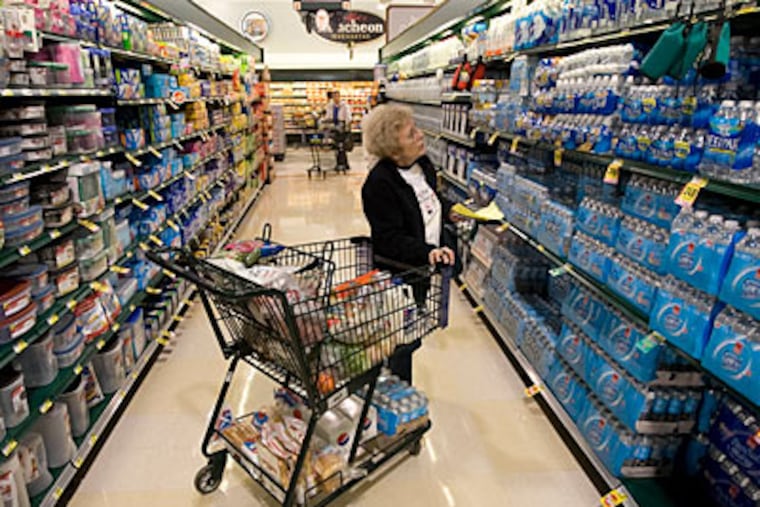Feeding inflation
RALEIGH, N.C. - Even in a recession, you have to eat. But with food prices up 7 percent in the last 12 months and projected to go up at least an additional 3.5 percent next year, it's not easy to fill the grocery cart.

RALEIGH, N.C. - Even in a recession, you have to eat. But with food prices up 7 percent in the last 12 months and projected to go up at least an additional 3.5 percent next year, it's not easy to fill the grocery cart.
Doris Jones has started eating just two meals a day. She drinks water and juice to stay full.
Jones, 62, has a part-time job at Target Corp. and gets a small pension from General Electric Co. Her husband, retired from the now-nonexistent GTE phone company, does not receive a pension.
With everything costing more, food is just one place where she is skimping.
"I try not to do things I'm not needing to do," Jones said. "I feel like I don't know what happened to the money."
Many shoppers have time-tested strategies for saving at the food store. But in the last year as prices for such staples as rice, cheese and butter have climbed, fewer shoppers are indifferent to the cash register total.
Coupons have taken on new importance - The Promotion Marketing Association now reports that 97 percent of the people who do the majority of the shopping for their households use coupons at supermarkets.
Shoppers walk the aisles, scanning sales fliers and punching numbers into calculators. They stand in front of the cereal boxes, comparing prices, doing the mental math on buy one, get one deals. Others bypass certain aisles and products that were once a staple of their pantries.
Cutting back at the food store is almost inevitable, with the economy in the 13th month of a recession and consumer spending slowing across the board.
There is a high level of sensitivity to food prices because food is essential and the food store is one of the places where American shoppers spend the most time. Most families visit twice a week and spend an average of $97.80 a week there.
Next year, the estimated 3.5 percent increase in food prices could easily go higher if gasoline prices rise again, bad weather affects crops, or some unforeseen event affects the supply chain.
"We're looking at basically a 10 percent increase in food prices" over the two-year period of 2008 and 2009, said Brian Todd, president of the Food Institute, a New Jersey group that tracks food pricing. "That hasn't happened since the late 1980s."
At the least, most people are trying to keep their grocery spending level as prices increase.
Betty Dean said she was paying more attention to sales, using more coupons, and planning her meals a week or even two weeks in advance.
A 67-year-old retiree from the North Carolina Department of Health and Human Services, Dean said grocery costs eat up the majority of her $1,000 monthly Social Security income.
She and her husband, Jim, live on their two retirement checks and the Social Security money.
"I used to be able to buy for us for $100 to $150 a week," she said. "If I spent $150 a week, that was just enormous. Now if we spend $150 a week, that's average."
For their part, grocery stores have shifted gears and are promoting value. They are being more aggressive with sales and promotions, and are launching new programs that emphasize bargains.
But retailers cannot afford to give away too much, said Bill Greer, spokesman for the Food Marketing Institute. Most food stores have a profit margin of only about 1 percent.
"There's a very small margin of error," he said.